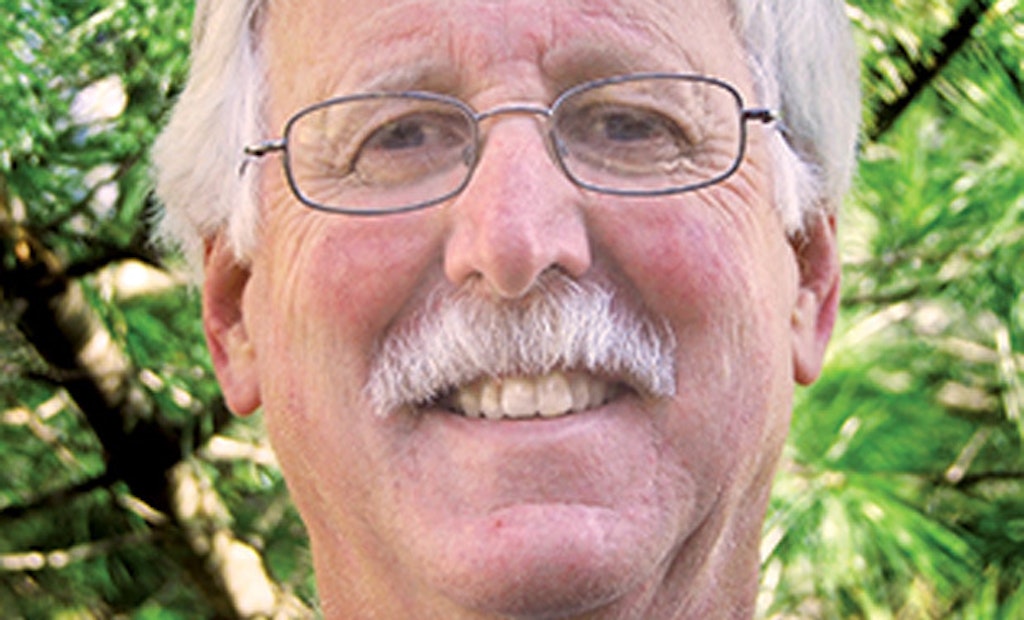
Interested in Onsite Systems?
Get Onsite Systems articles, news and videos right in your inbox! Sign up now.
Onsite Systems + Get AlertsA reader posed a question about water in the soil and how it moves. He asked: “Is it true that regardless of whether a lower soil is a sand or clay texture that water will not move into the lower layer until the layer above is saturated?” Yes it is true, and the answer has relevance to what we do in a couple of different ways. Before we discuss those, let me try to explain why the answer is true.
The ability of soil to conduct water is not controlled by the total porosity of the soil. This is called soil permeability or conductivity. It is controlled by size, continuity and what soil scientists call tortuosity of the pores. Tortuosity is a way to express that although pores may be continuous, they take twists and turns. A clay soil has more total pore space than a sand, but the amount of water that will move through sand over a given time period is much greater. This is because the pores in a sandy soil are larger and more continuous than in the clay. I liken this to comparing a 1-inch-diameter garden hose to a 4-inch fire hose. Which one will convey water faster? Hopefully the answer is obvious!
When I used to teach classes on this subject, I always asked which soil has more pore space, a sand or a clay? The class would usually choose sand because they knew from experience that water moved through sand faster. In fact, sands typically have about 35 percent pore space versus 50 percent for a clay.
TWO MAJOR FORCES
Water in soil pores is subject to a number of different forces, but two are predominant. The first is gravity, the natural pull toward the center of the earth. (This is why in our business we say sewage runs downhill!) The second is called matric potential, and is a result of the affinity water molecules have to each other and soil particles.
In soil pores, water molecules are attracted to other water molecules by cohesion and to the sides of the soil pores (particles) by adhesion. The result of these forces operating together is to draw water into and hold water in the pores against the gravitational pull. This is called capillary rise. If you can remember back to your high school science classes, this phenomenon is demonstrated by putting the ends of glass tubing with different diameters in a beaker of water. Water rose in the smaller-diameter tubing; this is cohesion and adhesion at work. When the weight of the water equals the gravitational pull the rise stops. Water is held tighter in the smaller pores.
In soils this means a couple of things. First, if soil is saturated and allowed to drain, it will drain out of the largest pores first because they have the weakest hold on water, and water is held in the finer pores because they can better retain water against the force of gravity.
Back to the question: Soil layers that have different pore sizes and permeability will interfere with downward flow of effluent because of these characteristics. Any abrupt change in permeability, as reflected by pore size and continuity, means that for water to move from one layer into another, the soil above the lower layer has to become saturated at the boundary before water will move across it.
If the upper layer has a significantly higher permeability, the water ponds because the lower layer cannot transmit water as fast as the upper layer delivers it due to the size of the pores. In our reader’s question this would be where a sand layer overlies a clay layer. On the other hand, if the upper layer has the smaller pores (clay) the lower layer (sand) cannot absorb the water until the layer becomes saturated because the pores in the upper layer hold on to the water too tightly.
It is important to identify changes in soil layers to make sure there is enough distance between where septic tank effluent enters the soil and any saturated soil conditions caused by the layer change.
WHY THE PONDING?
For gravity distribution systems, these same principles apply. As a biomat forms in an operating trench, effluent ponds above the biomat. The soil underneath is unsaturated because the larger pores remain air-filled, since they cannot pull the water across the boundary, while the smaller pores are water-filled because they can pull the water down in conjunction with the hydrostatic pressure pushing downward from the ponded liquid above the boundary.
This is what sets up the unsaturated, well-aerated soil beneath the system that allows for efficient treatment. For gravity-fed systems we rely on this to occur to provide our desired level of treatment. This is also why our design soil-loading rates are based on development of the biomat.
Obviously, it is a bit more complicated than this, and it has some other implications for site evaluation methods and for system selection to be addressed in future columns.





